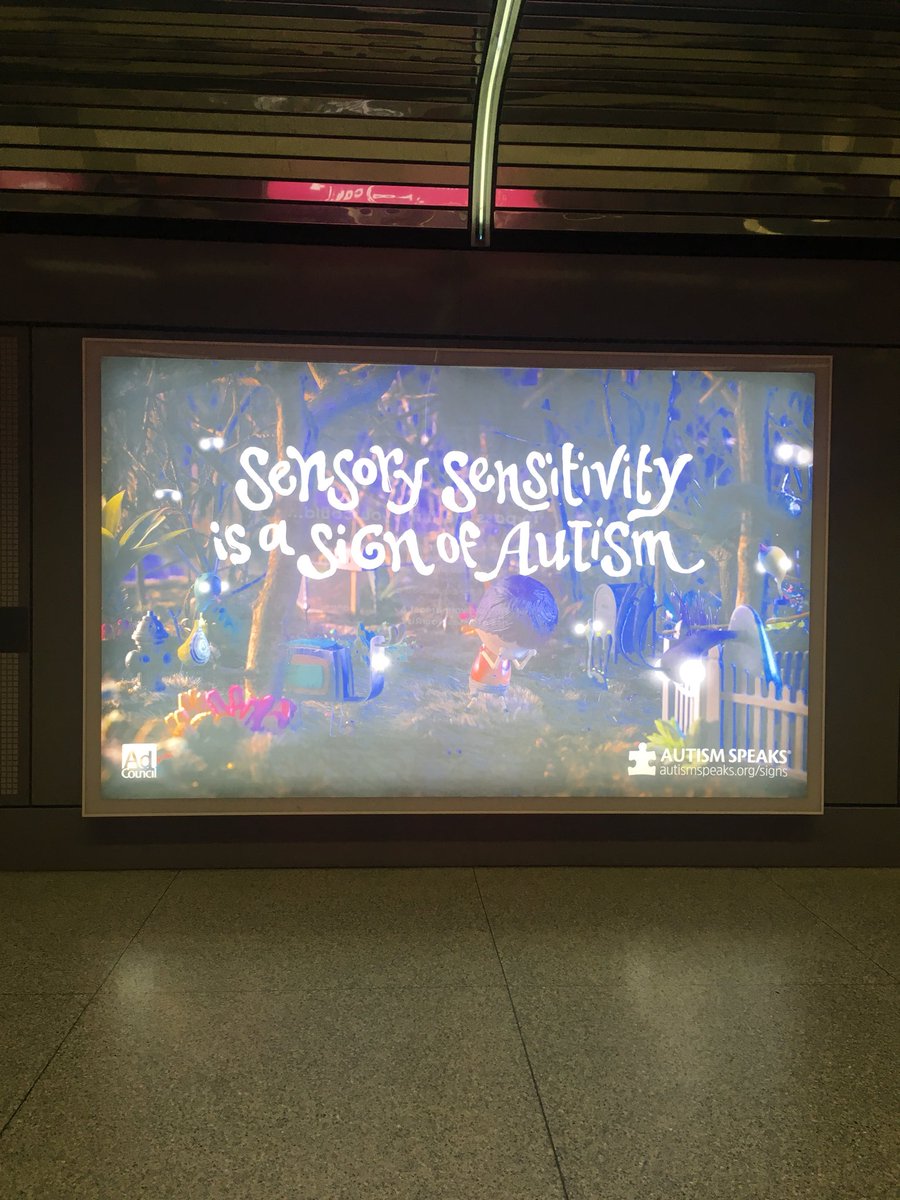Have you seen the billboards by Autism Speaks? “Sensory sensitivity is a sign of autism”. As an autism researcher, I think it’s absolutely wonderful to increase awareness of the symptom profile of individuals with autism spectrum disorder (ASD). So often the greatest emphasis is placed on difficulties within the social domain, and many media portrayals of individuals on the spectrum are characterized by social aloofness. Only recently has there been greater efforts to paint a more realistic picture of how someone with high-functioning ASD may present (e.g., Max from Parenthood, or Sam from Atypical). ASD is a complex disorder comprised of a constellation of symptoms that not only affects social communication but also sensory processing.
The current diagnostic criteria for ASD include impairments in social communication and the presence of restrictive and repetitive behaviors. Sensory sensitivity falls under restrictive and repetitive behavior. Why might this be? Toddlers with ASD may exhibit sensory seeking behaviors, which often manifests as repetitive in nature. This includes atypical visual inspection of objects (e.g., peering) or atypical object play (e.g., spinning). Hypersensitivity to sensory inputs may be restrictive—imagine someone who may have tactile sensitivities and must cut off the tags of their clothes before wearing it. Or someone may have auditory sensitivities and avoids certain activities because of it. Altogether, sensory sensitivities detract attention from social stimuli to nonsocial stimuli and may compromise the types of learning opportunities that support social development.
Converging research suggests that atypicalities in sensory processing may impede social functioning in children with ASD. Given this, there has been some interesting work examining the neural bases for sensory sensitivity in children with ASD. In general, the brains of children with ASD seem to be overly active when processing sensory inputs including distracting sounds and mildly aversive tactile stimulation (e.g., being rubbed with a scratching wool swatch). This has motivated researchers to see how their neural regions are communicating with one another during rest (e.g., without the presence of external stimuli). That would give a sense of how tuned their brains are to potentially process sensory inputs. Relative to typically developing children, children with ASD exhibit greater connectivity within an intrinsic brain network known as the Salience Network. The Salience Network is believed to guide attention to the most self-perceived important intrinsic and extrinsic stimulus in a person’s environment. It underlies perceived salience of not only internal states (e.g., hunger, temperature…), but also external stimuli (e.g., people). Children with ASD who also have symptoms of sensory over-responsivity also show greater connectivity within the Salience Network with sensory processing regions. This suggests that even while their brains are at rest they are predisposed to attend to sensory inputs, which may contribute to its aversive nature.
While sensory sensitivity is a feature of ASD, it is really important to note that some level of it is fundamental for normative development. For instance, it’s adaptive for infants to express basic states like hunger or distress from soiled diapers. Furthermore, early in infancy, low-level features of perceptual salience (e.g., luminance, saturation, contrast) initially guide visual attention to faces. Faces represent a class of stimuli that is foundational for social development as they convey a wealth of social and communicative information. While the process that underlies attention to faces shifts during infancy, initial attention to the low level visual features appears to be formative for subsequent social attention for faces. Moreover, sensory sensitivity is not only restricted to ASD. Many children may show signs of sensory over-responsivity but do not have autism. It is a symptom dimension within the complex ASD phenotype—just as social difficulties may be a secondary symptom of ADHD or anxiety.
